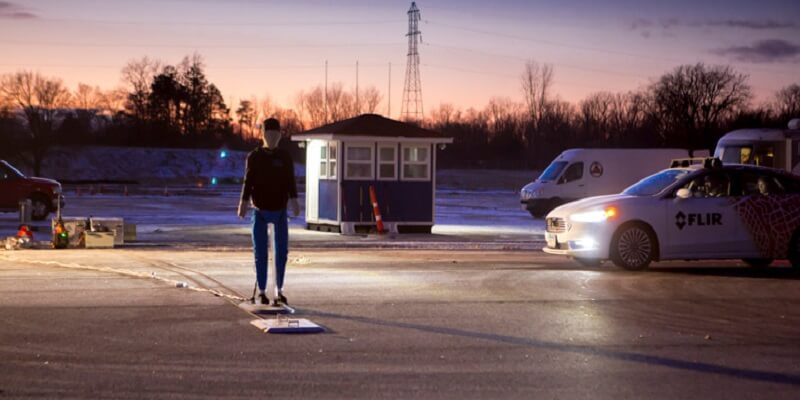Automatic emergency braking (AEB) or pedestrian detection systems at present rely on systems using radar and, in some cases, visible-light cameras. There are several instances when these sensors have difficulty detecting a pedestrian and result in accidents.
In this context, FLIR, a company that designs and manufactures thermal imaging infrared cameras, claims that thermal-camera and-radar fused AEB can prevent such accidents. A thermal camera provides complementary data to RGB cameras and radar. Thermal cameras “see” heat, not reflected light, and perform well both in daylight and in darkness. They can also see through sun and headlight glare, most fog, and up to 4x farther than typical headlights illuminate in darkness.
FLIR Systems has contracted VSI Labs, a technology research company that examines the building blocks for autonomous vehicle (AV) technologies, to develop a proof-of-concept Automatic Emergency Braking (AEB) system that fused perception data from a FLIR ADK’s ethernet-based Boson thermal camera and a Delphi ESR 2.5 radar.
The radar provided range data and the thermal camera provided object detection and classification. VSI recently conducted initial performance tests based on Euro NCAP requirements at the American Center for Mobility (ACM).
Initial tests were completed in December 2019 at the American Center for Mobility (ACM) near Detroit, MI. The test design was based on the Euro NCAP, but not all testing requirements were met as the winter weather was colder than the specified testing temperature range, roadways had snowy, wet, or slick surfaces and wind interfered with the test fixtures. Three test cases were conducted in both daylight and darkness, giving six datasets and 35 total test runs using an adult Euro NCAP Pedestrian Target (EPTa).
According to the company, the test results were promising. In all runs for all test cases, the AEB system successfully brought the VUT to a stop before reaching the EPTa. Additional testing is recommended and planned for spring/summer of 2020 following AEB algorithm optimization, EPTa heating improvements and when weather is in test parameters.
Source: Flir Announcement


